Hyundai Santa Fe (2000-2023) firing order — diagram & guide
Igniting efficiency in the Hyundai Santa Fe with its firing order.
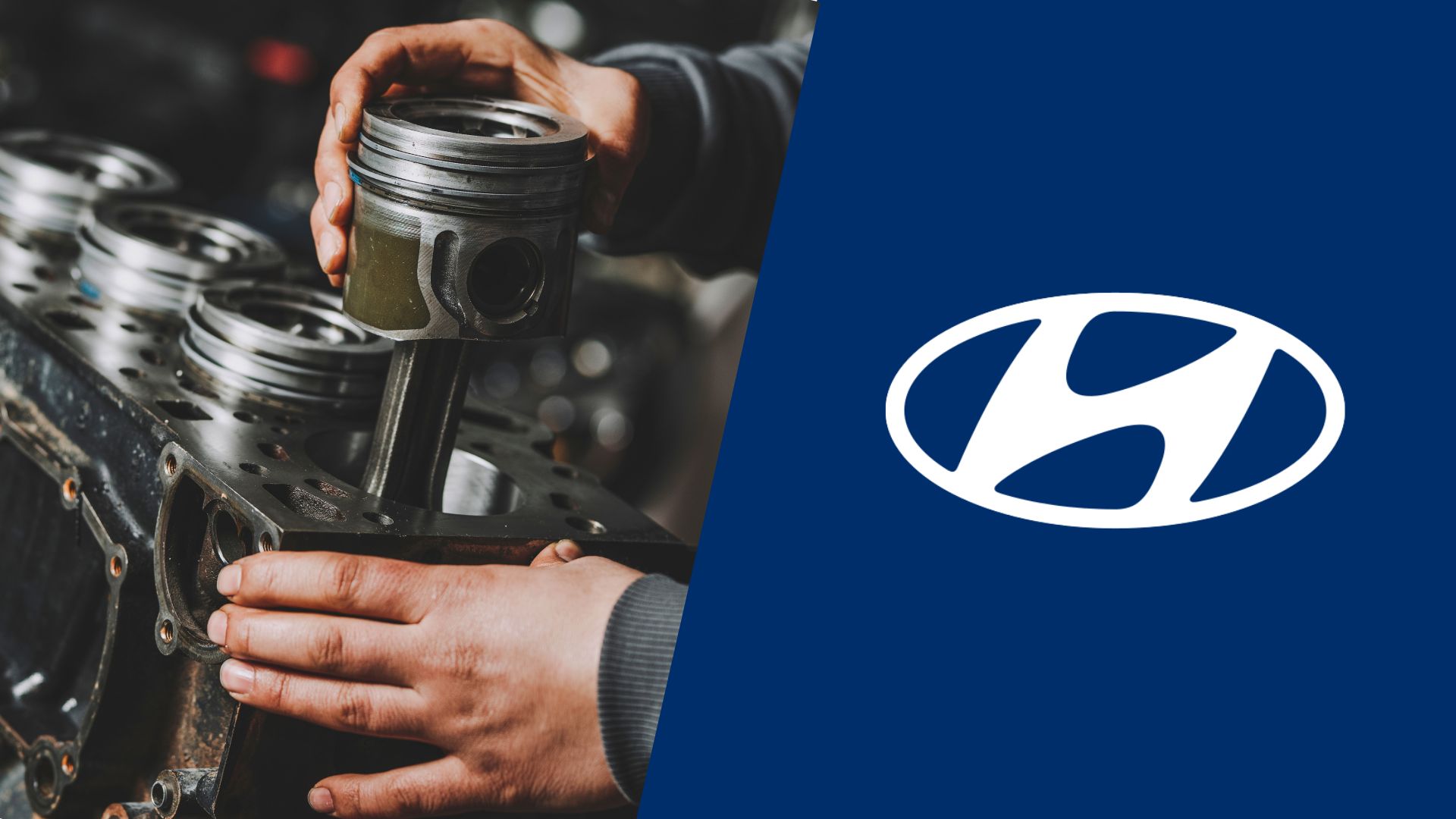
The Santa Fe has always been a synonym for a Hyundai SUV, especially on the US market, and after two decades of production, all sorts of different engine options have been used. Of course, the model featured a variety of different engine types over the years, so it’s good to stay updated on details that could be crucial for proper maintenance.
Knowing the firing pattern is surely among those, so this guide on the Hyundai Santa Fe (2000-2023) firing order should help you out. Our team will make sure that you get all the confirmed details regarding the firing order and cylinder layout for your Santa Fe engine.
| SANTA FE YEARS | ENGINE | FIRING ORDER |
|---|---|---|
| 1st Gen (2000-2004) | 1.8L | 1-3-4-2 |
| 2.0L | 1-3-4-2 | |
| 2.4L | 1-3-4-2 | |
| 2.7L V6 | 1-2-3-4-5-6 | |
| 3.5L V6 | 1-2-3-4-5-6 | |
| 2nd Gen (2005-2011) | 2.0L | 1-3-4-2 |
| 2.4L | 1-3-4-2 | |
| 2.7L V6 | 1-2-3-4-5-6 | |
| 3.3L V6 | 1-2-3-4-5-6 | |
| 3.5L V6 | 1-2-3-4-5-6 | |
| 3rd Gen (2012-2017) | 2.0L turbo | 1-3-4-2 |
| 2.4L | 1-3-4-2 | |
| 3.3L V6 | 1-2-3-4-5-6 | |
| 4th Gen (2018-2023) | 2.0L turbo | 1-3-4-2 |
| 2.4L | 1-3-4-2 | |
| 2.5L | 1-3-4-2 | |
| 3.5L V6 | 1-2-3-4-5-6 |
First-generation Hyundai Santa Fe (2000-2004) firing order
The first-gen Santa Fe offered something for everyone depending on which engine option you’d go for as a driver. There were four-cylinder engines of different displacements, along with a few V6 engines as well. So, we’ll discuss each of these options in terms of the firing order and cylinder configuration to help you understand what you need to do a bit better:
Hyundai Santa Fe 1.8L firing order
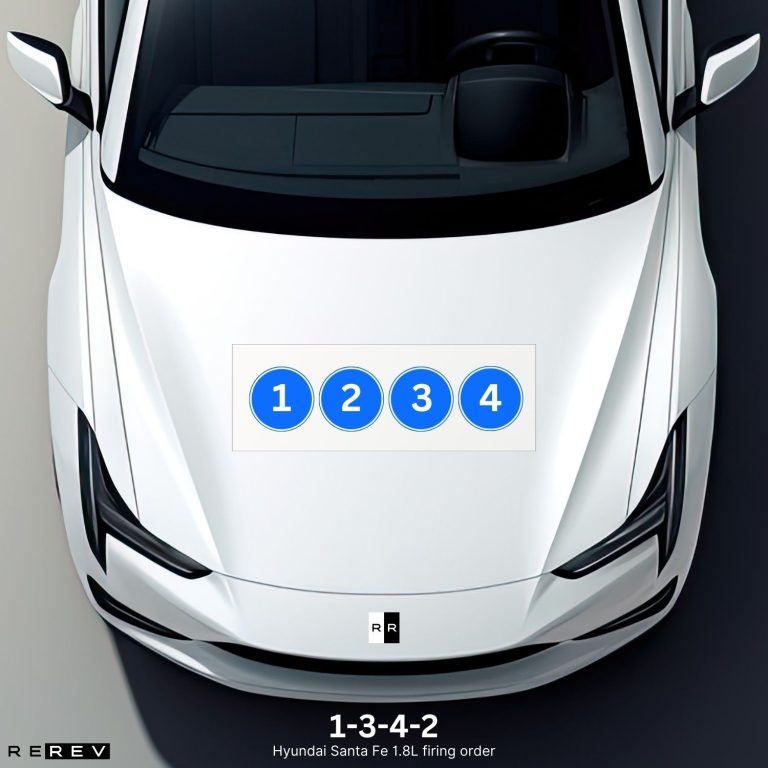
The four-cylinder base engine option for the first-gen Santa Fe was the 1.8-liter engine, and the Hyundai Santa Fe 1.8L firing order is 1-3-4-2. This four-cylinder engine features a straight four configuration and that means that cylinders are arranged from 1 to 4 from left to right in a straight sequence.
Hyundai Santa Fe 2.0L firing order
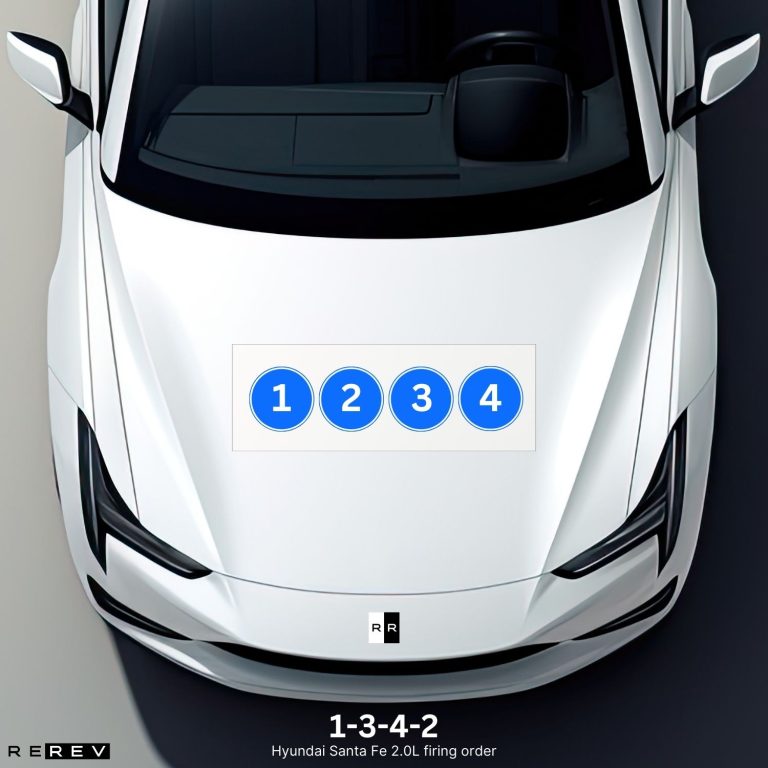
As for the larger four-cylinder engine, the Hyundai Santa Fe firing order is 1-3-4-2, so there’s not much difference between these two engines. On top of that, they also share a common cylinder configuration, with the first cylinder being on the left side, and the fourth cylinder being on the right side of the engine.
Hyundai Santa Fe 2.4L firing order
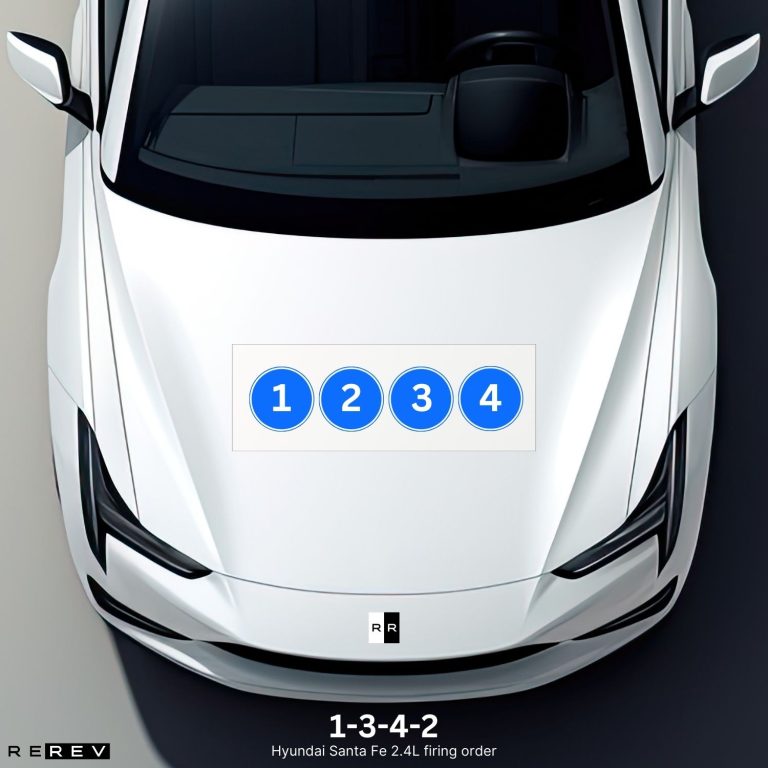
The final four-cylinder engine offered for the first-gen Santa Fe was a 2.4-liter engine, and this one was well-known among Hyundai engines. So, the Hyundai Santa Fe 2.4L firing order is 1-3-4-2 which is once again the same as for the previous two four-cylinder options.
It’s somewhat of a relief that you can count on the same cylinder configuration for this engine as well, keeping in mind that the first cylinder is the left-most one. Cylinders 2, 3, and 4 follow up toward the right side of the engine.
Hyundai Santa Fe 2.7L firing order
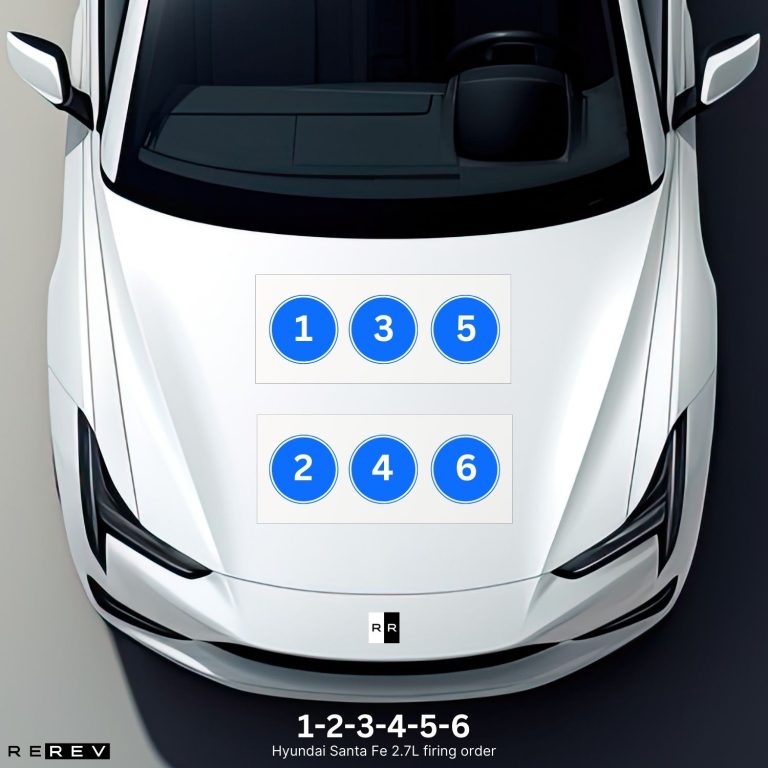
The Hyundai Santa Fe 2.7L firing order is 1-2-3-4-5-6, and this is the first V6 engine used in Santa Fe at that time. To fit into the engine bay more adequately, this engine features a transverse placement, so there are two cylinder banks.
The first one is on the upper side with cylinders numbered 1, 3, and 5 from left to right. On the other hand, cylinders 2, 4, and 6 are laid out within the lower bank, also from left to right.
Hyundai Santa Fe 3.5L firing order
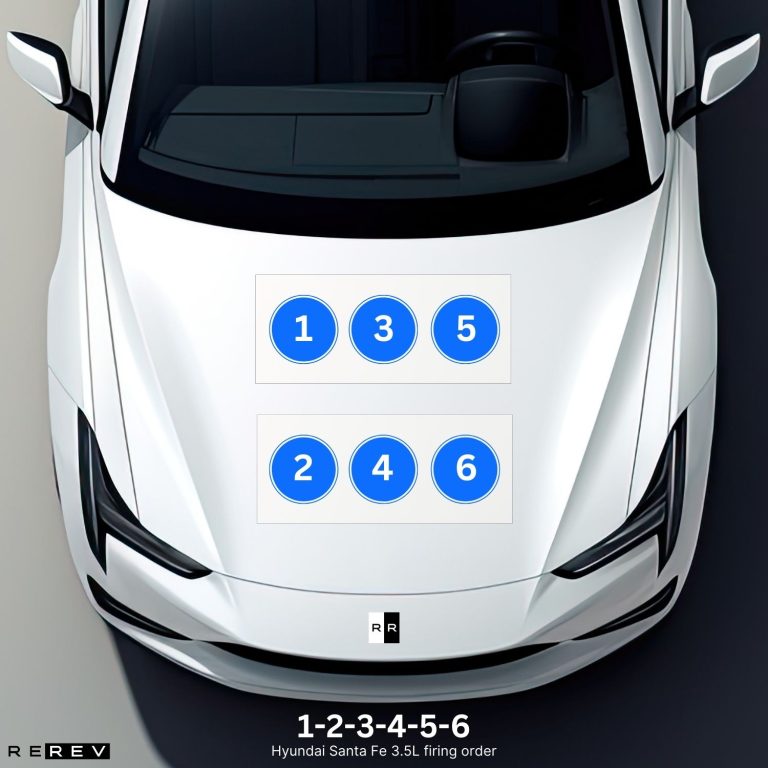
The larger 3.5-liter V6 engine was used as the most powerful Santa Fe engine for generations, and it’s pretty similar to the 2.7-liter one. The Hyundai Santa Fe 3.5L firing order is 1-2-3-4-5-6, just as it is for the previously mentioned V6 engine.
Once again, a transverse engine placement was used for this V6 for easier fitment and that means that the cylinder layout also matches. All the odd cylinder numbers are laid out within the upper bank, going 1, 3, and 5 left to right, while the lower bank contains even cylinders numbered 2, 4, and 6 left to right.
Second-generation Hyundai Santa Fe (2005-2011) firing order
The second-gen Santa Fe model featured a lot of the same engine options as the first-gen one, including the 2.0L, 2.4L, 2.7L, and a 3.5-liter V6. However, an extra V6 option was added in this generation in the form of a 3.3-liter engine, so we’ll talk about that one as we already covered the previous picks.
Hyundai Santa Fe 3.3L firing order
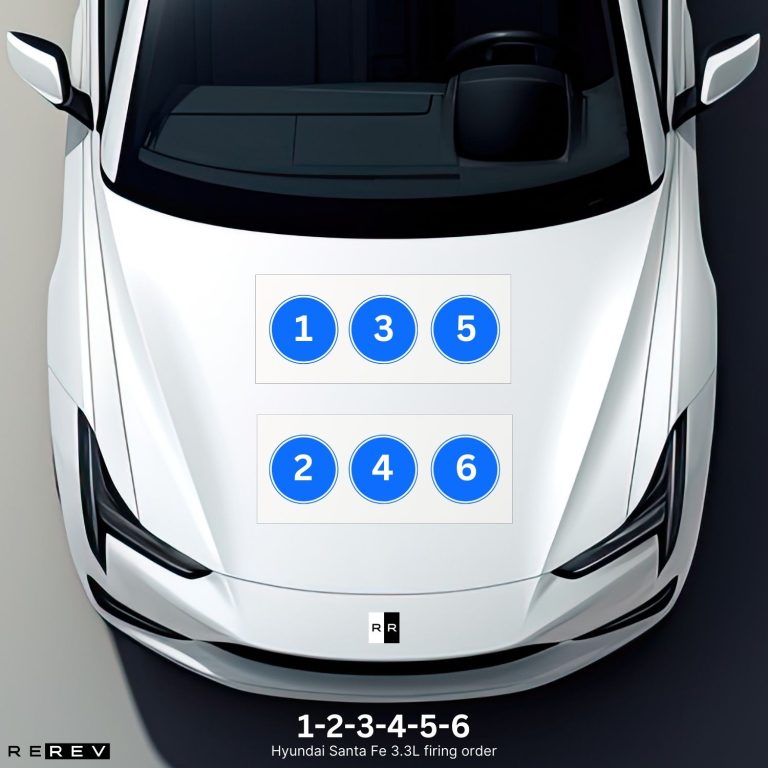
The Hyundai Santa Fe 3.3L firing order is 1-2-3-4-5-6 and this engine isn’t any different from the previous V6 options we’ve discussed. In fact, it also boasts the same cylinder arrangement in a transverse placement, going 1, 3, to 5 up at the front, and from 2, 4, and 6 in the lower cylinder bank.
Third-generation Hyundai Santa Fe (2012-2017) firing order
As for the third-gen model of the Santa Fe, Hyundai only went with two known engine options including a 2.4L and 3.3-liter V6. However, there’s yet another engine we’ve discussed here, only with a turbocharger added since the 2.0-liter engine got a forced induction update.
Still, it featured the same 1-3-4-2 firing order and cylinder layout as we’ve discussed earlier in this guide since it was based on the same engine block, so we won’t go over that one again.
Fourth-generation Hyundai Santa Fe (2018-2023) firing order
The fourth-gen Santa Fe once again offered a lot of previously known engine options, from the 2.0L turbo to a 2.4-liter four-cylinder and a 3.5-liter V6. However, there’s also a new generation 2.5-liter four-cylinder engine used in a few other recent Hyundai models, so that’s the only engine option that we didn’t discuss.
Hyundai Santa Fe 2.5L firing order
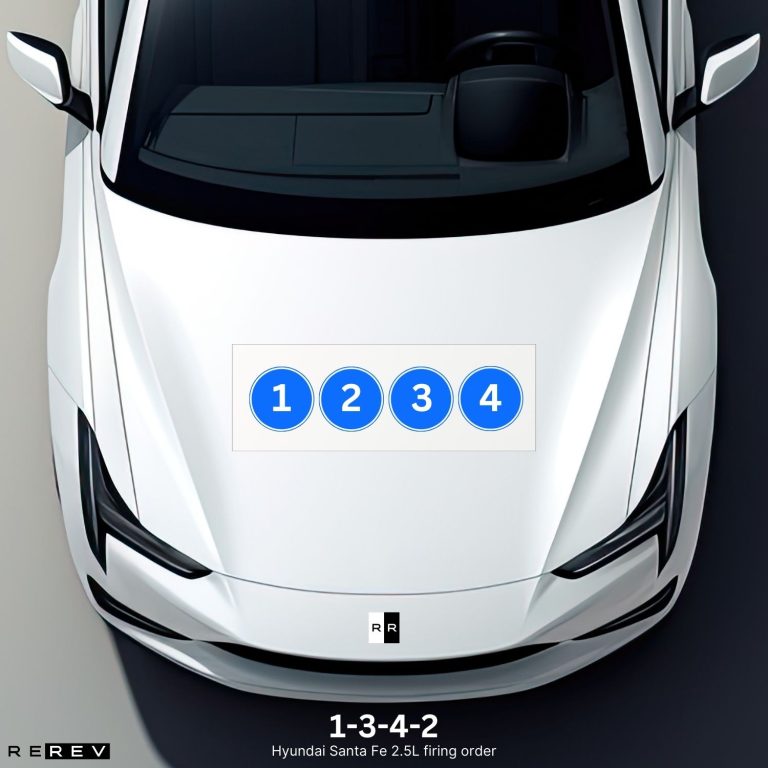
Finally, the Hyundai Santa Fe 2.5L firing order is 1-3-4-2, so that draws the conclusion that every Hyundai four-cylinder engine features the same firing order. Not only that, but this engine also shares the configuration and cylinder placement with all the other straight-four engines offered through the Santa Fe generations.
So, you’ll find the first cylinder on the left, with cylinders 2, 3, and 4 following right up toward the right side of this engine.
Our take
Well, there you have it – we’ve explained the firing sequence and cylinder arrangement of each and every Santa Fe engine from the first generation to the current model. Our team hopes it will be enough to help you reduce the maintenance costs and avoid misfires and engine issues in the long run, so feel free to use our guide as a reference in maintenance.